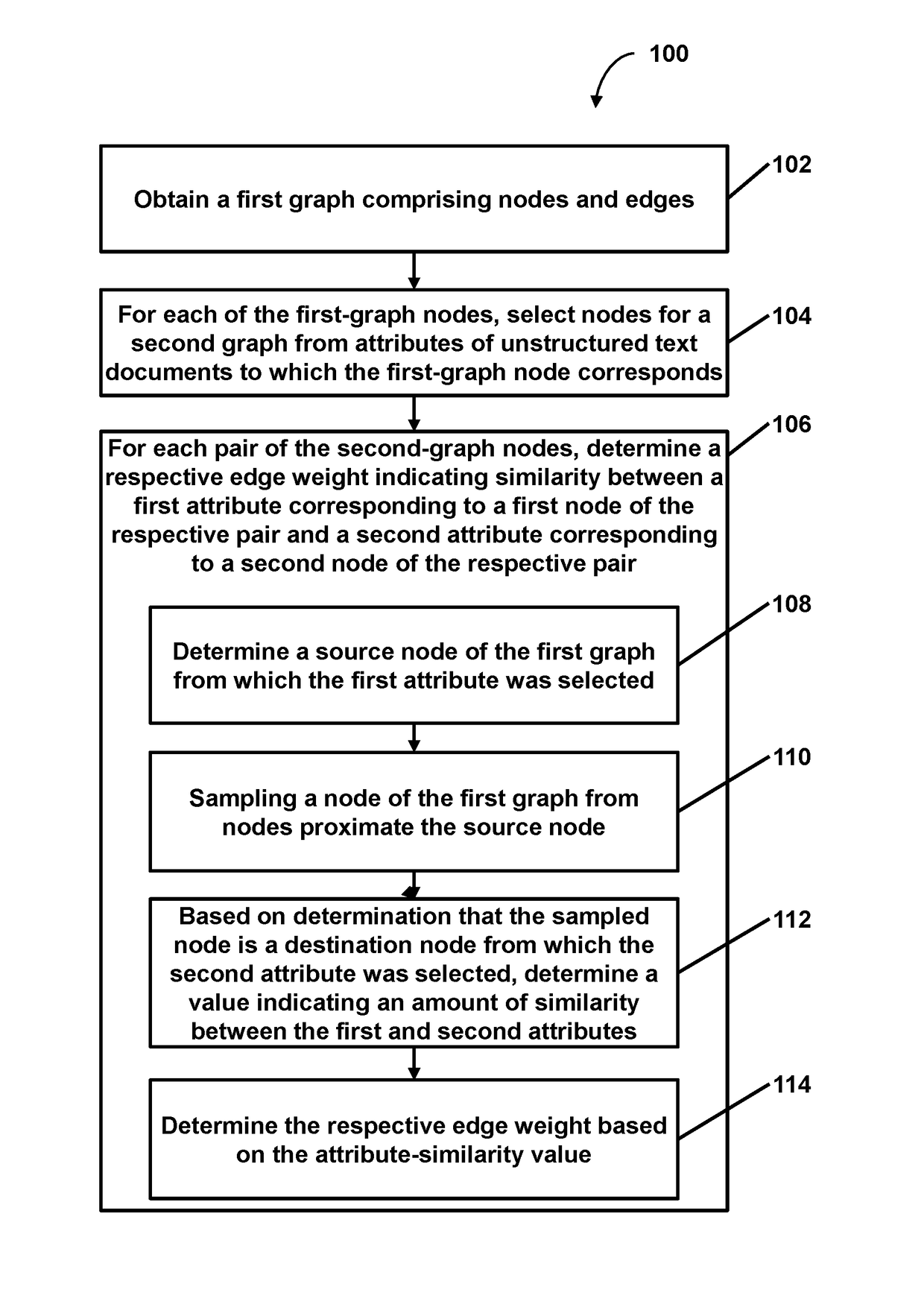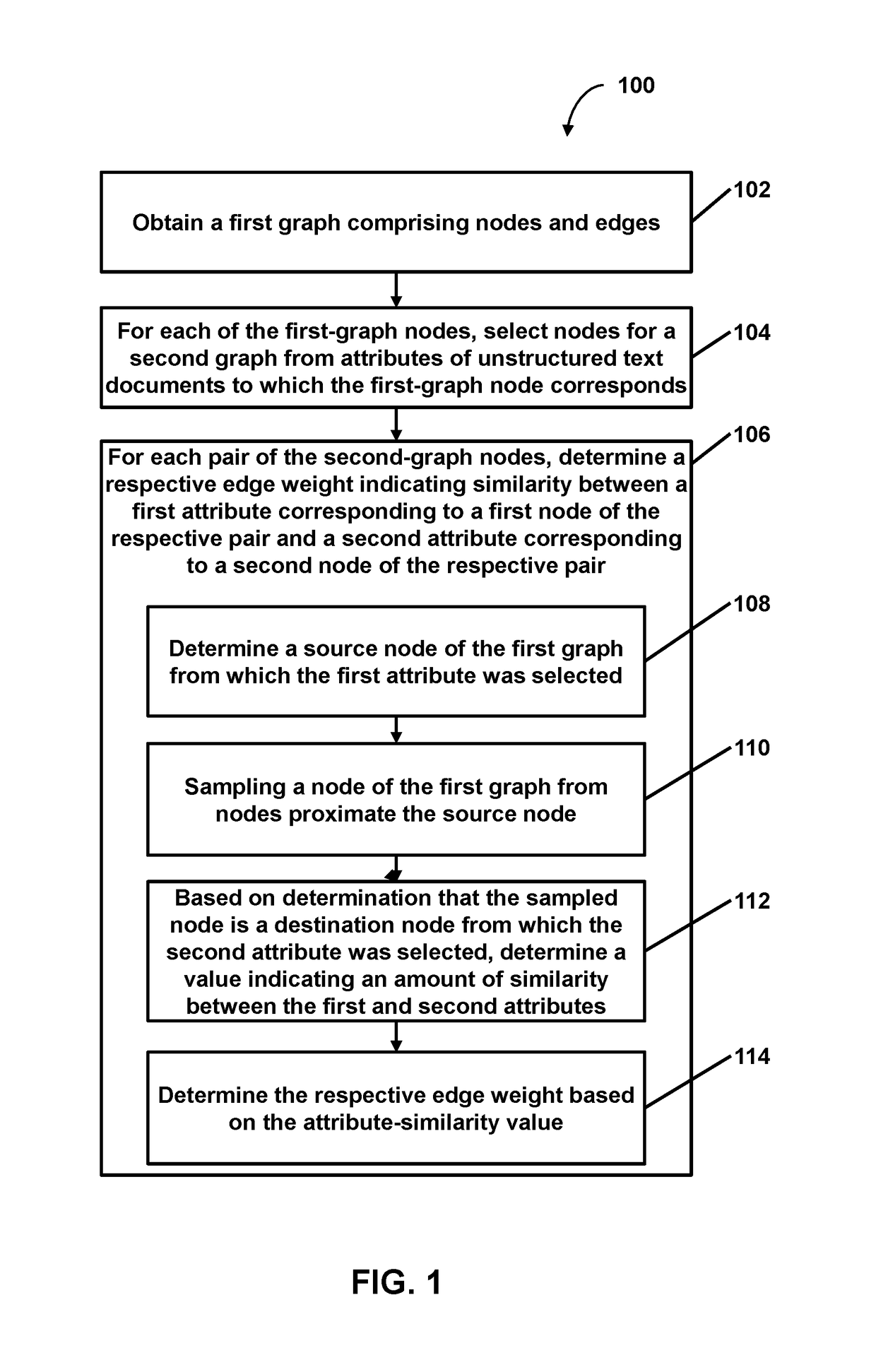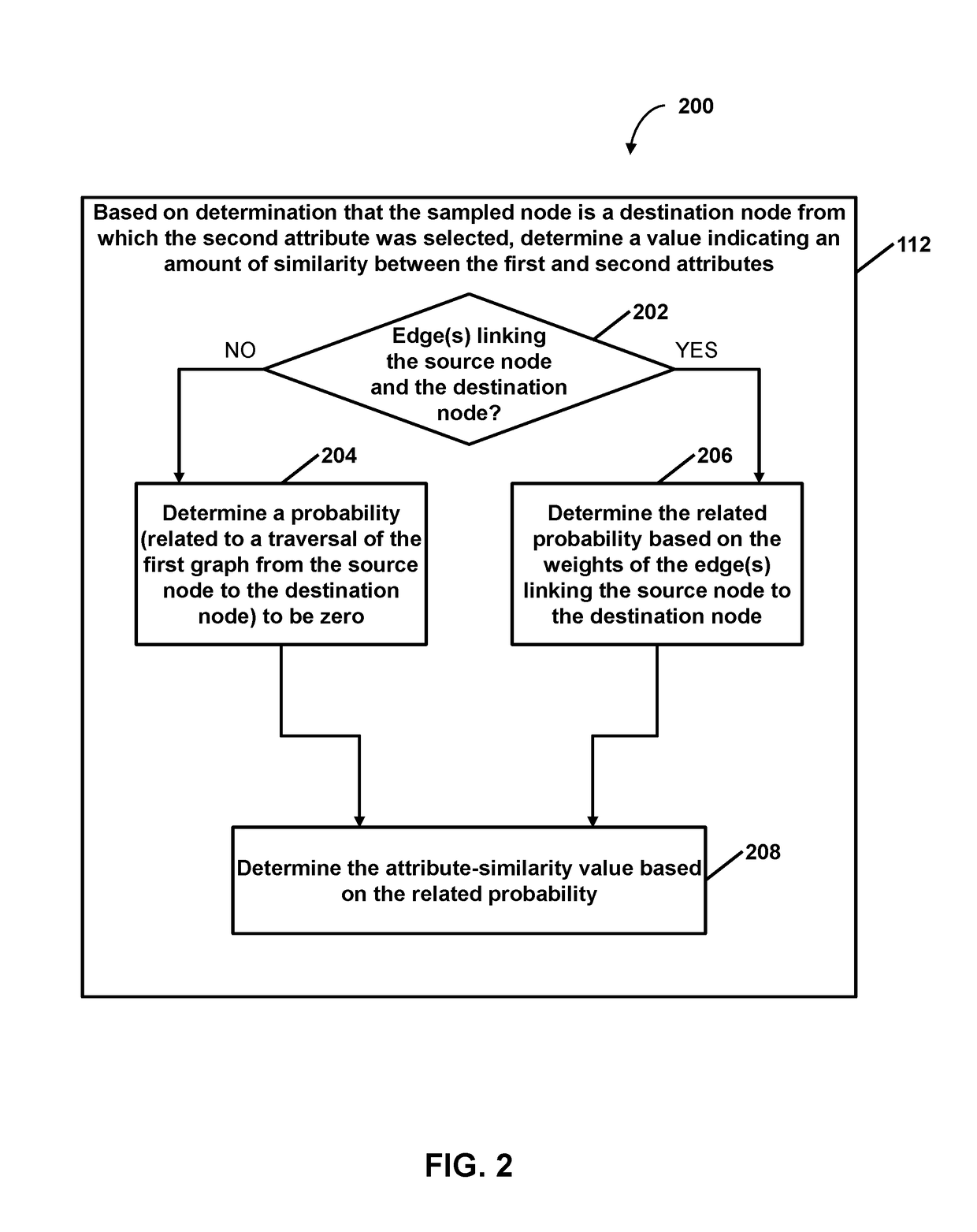Pivoting from a graph of semantic similarity of documents to a derivative graph of relationships between entities mentioned in the documents
a technology of relationship graph and semantic similarity, applied in the field of derivative graphs, can solve the problems of inability to make inferences that would otherwise be impractical, and the typical method fails to reveal other similarities between attributes of represented documents, entities, or other features
- Summary
- Abstract
- Description
- Claims
- Application Information
AI Technical Summary
Benefits of technology
Problems solved by technology
Method used
Image
Examples
embodiment 1
2. The method of embodiment 1, wherein: the documents have on average more than 50 words; at least some of the entities are people or businesses mentioned in the documents; obtaining the first graph comprises: obtaining the unstructured text documents; determining, for each document, a feature vector indicating the presence of n-grams in the respective document; determining pair-wise similarity scores based on a respective angle between the respective feature vectors; detecting more than 100 entities mentioned in the unstructured text documents comprises detecting more than 1000 entities with means for named-entity recognition; determining a source node of the first graph having an unstructured text document in which the first entity is mentioned comprises: identifying a set of a plurality of nodes in the first graph having an unstructured text document in which the first entity is mentioned; and selecting the source node from among the set; and the respective edge weight is based o...
embodiment 7
8. The method of embodiment 7, wherein selecting among the adjacent nodes comprises: selecting among the adjacent nodes of the first graph based on a respective edge weight between the source node and the respective adjacent node.
9. The method of embodiment 7, comprising: determining which nodes in the first graph are adjacent the selected adjacent node; and selecting among the nodes adjacent the node adjacent the source node in the first graph.
10. The method of any of embodiments 1-9, wherein determining a respective edge weight indicating similarity between a first entity and a second entity comprises: probabilistically traversing the first graph from the source node to a plurality of nodes via edges of the first graph; determining an amount of the plurality of nodes that mention the second entity; determining a sample statistic of the plurality of nodes based on the amount.
11. The method of any of embodiments 1-10, comprising: for each of the second-graph nodes, assessing, by one...
embodiment 15
16. The method of embodiment 15, wherein determining the related probability comprises: in response to no edge or combination of edges linking the source node to a destination node, determining the related probability to be zero.
17. The method of embodiment 15, wherein determining the related probability comprises: in response to an edge or combination of edges linking the source node to a set of destination nodes, determining the related probability based on the weights of the edge or combination of edges linking the source node to the destination nodes.
18. The system of claim 15, wherein determining the related probability comprises: in response to edges linking the source node to destination nodes, normalizing edge weights of the edges and determining the related probability based on the normalized edge weights.
19. The method of any of embodiments 1-18, further comprising: for each of the evaluation nodes of the first graph, extracting the attributes from a plurality of metadata ...
PUM
 Login to View More
Login to View More Abstract
Description
Claims
Application Information
 Login to View More
Login to View More - R&D
- Intellectual Property
- Life Sciences
- Materials
- Tech Scout
- Unparalleled Data Quality
- Higher Quality Content
- 60% Fewer Hallucinations
Browse by: Latest US Patents, China's latest patents, Technical Efficacy Thesaurus, Application Domain, Technology Topic, Popular Technical Reports.
© 2025 PatSnap. All rights reserved.Legal|Privacy policy|Modern Slavery Act Transparency Statement|Sitemap|About US| Contact US: help@patsnap.com



